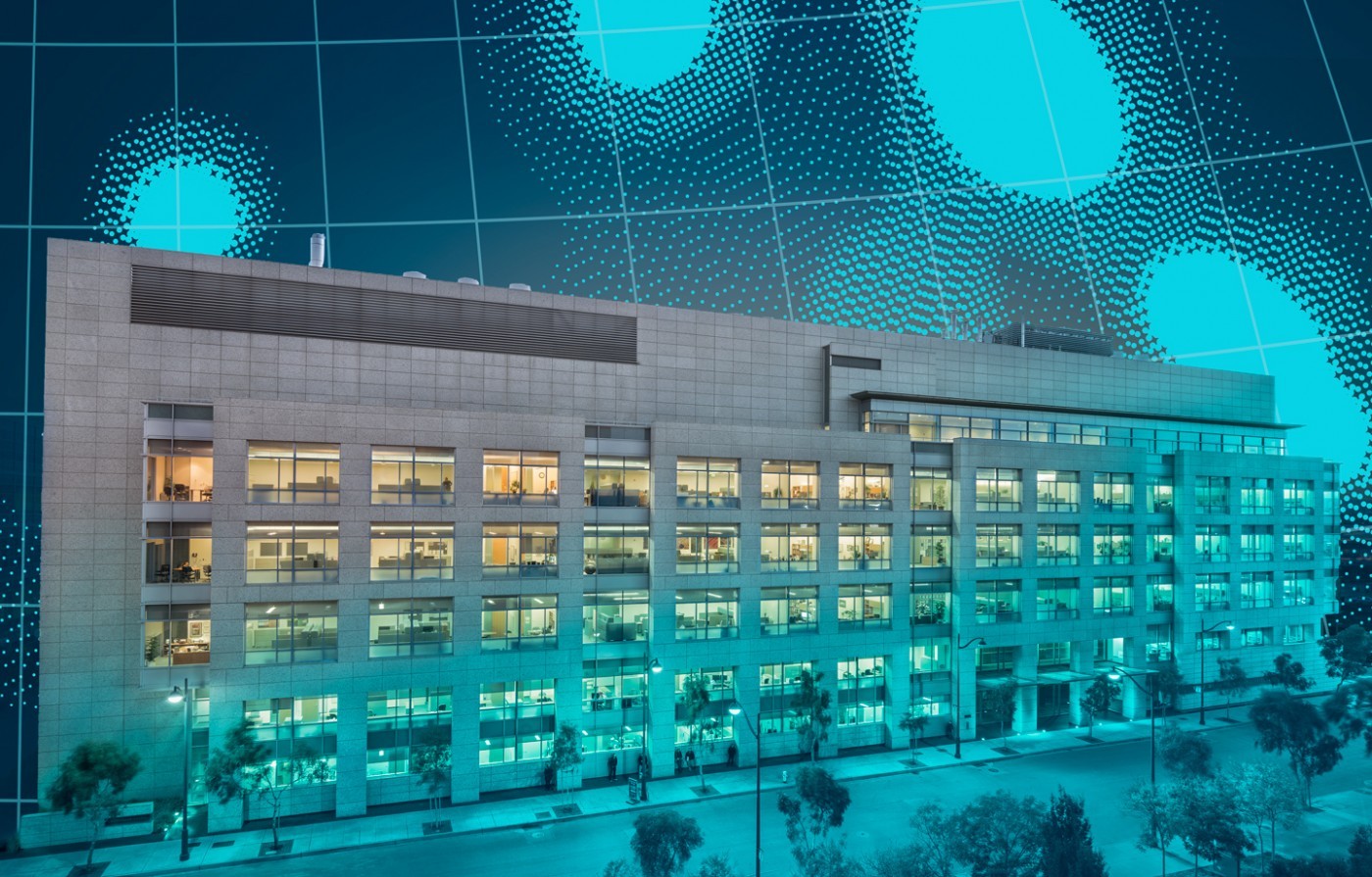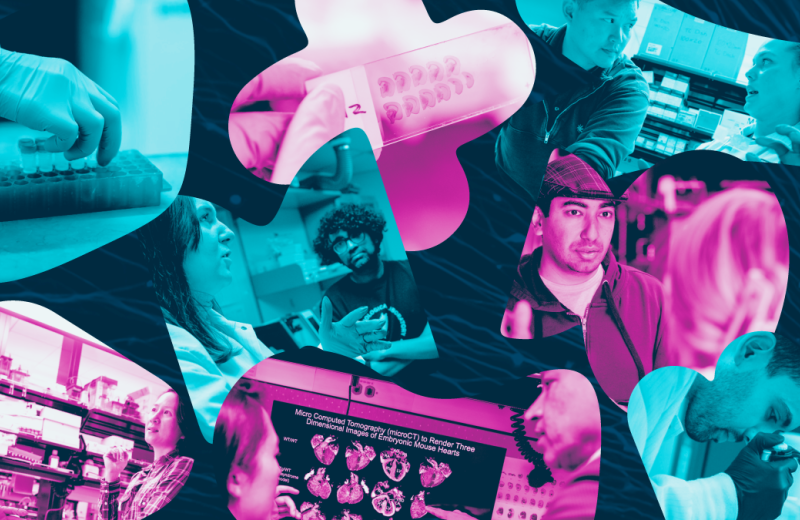Gladstone NOW: The Campaign Join Us on the Journey✕

Senior Investigator Melanie Ott, MD, PhD, and BSL-3 Lab Director Mauricio Montano will oversee the new Gladstone BSL-3 lab and ensure that the lab, personnel, and work all adhere to the appropriate security guidelines.
In keeping with our commitment to science overcoming disease, Gladstone is moving swiftly into research on SARS-CoV-2, the coronavirus responsible for the current COVID-19 pandemic. To this end, Gladstone will, in the coming weeks, open a Biosafety Level 3 (BSL-3) lab in the 1650 Owens Street building. This lab will allow researchers to carry out research with live viruses while keeping themselves, the building, and the environment safe from contamination.
We asked Senior Investigator Melanie Ott, MD, PhD, and BSL-3 Lab Director Mauricio Montano, who will oversee the BSL-3 lab, to answer some of the questions around this decision and its potential impact.
Why did Gladstone decide to do this?
Ott: The country and the world are in the midst of a pandemic for which we have, at this point, no treatment and no preventative therapy. Gladstone is uniquely positioned to lead the fight against this pandemic because of our years of experience with pathogenic viruses such as HIV, hepatitis, Zika, and others. In addition, we are fortunate to already have space in the building that can easily be turned into a BSL-3 lab, a type of lab that would take a long time to build from scratch.
While my lab and others at Gladstone have already started work on the coronavirus based on its genome sequence, we want to move to the next step quickly, which is to test our hypotheses and potential therapeutic drugs on live, replication-competent virus. We have the expertise, and we have unique tools that could allow us to make quick progress. We simply cannot pass up this opportunity to make a difference in the fight against COVID-19.
When will Gladstone receive the virus?
Ott: We cannot begin work with the live virus—or even receive the virus—until our BSL-3 lab is approved and fully operational. We expect this will take 1 to 4 weeks.
What will Gladstone do with the virus? What kind of research will be done?
Ott: The lab will help solve questions around how the virus causes severe disease in some people and not in others, and will prioritize testing therapeutics, new and already approved in the clinic, to quickly find a treatment for COVID-19.
How quickly can we expect to see results from the research?
Ott: Testing of new and already approved drugs should yield results immediately. Of course it will take more time to translate these results to clinical applications. But we are moving fast so our work is relevant for the current epidemic, and anticipate getting answers to our questions within a few weeks of starting work with the virus.
Are the Gladstone labs working independently or in conjunction with other research organizations or government agencies?
Ott: A lot of labs and organizations are coming together to fight the epidemic. We will be strongly aligned with colleagues at UCSF and the Bay Area, and with private and public funding sources.
Will the scientists working on the virus, or others in the building, run the risk of being infected?
Montano: The idea behind a BSL-3 lab is precisely to prevent the virus from spreading and from infecting people working with it. A BSL-3 lab is specially outfitted for work on pathogens that can travel by air and infect people via inhalation. For instance, a BSL-3 lab continuously draws clean air from the outside and does not allow air recirculation within the lab.
In addition, access to the lab is controlled by sets of self-locking doors and is restricted to specially trained and authorized personnel. All personnel working in the lab must wear appropriate protective equipment, and undergo special training for working safely with live virus.
How is Gladstone preparing for the virus? What safety measures are being put in place?
Montano: All the work on the live coronavirus will be performed in a special BSL-3 lab that meets specific safety standards for work on airborne pathogens. This lab will occupy space on the 6th floor of our building, and will only be accessible to trained and authorized personnel carrying the required set of keycards. The virus will be stored in locked compartments and may not be removed from the facility without special authorization.
We are working closely with UCSF biosafety officials to establish and maintain safe working conditions and protocols that meet or exceed the regulations imposed by the various outside governing regulatory agencies such as Cal OSHA, the San Francisco Department of Health, the CDC, and the NIH. The UCSF Institutional Biosafety Committee will not approve our application for the BSL-3 lab until it is satisfied that we meet these regulations.
With the virus being studied in the Mission Bay neighborhood of San Francisco, is there a greater chance that people in that area could be infected?
Ott: No. The air circulation system is completely controlled. No virus gets out of the lab. The air is filtered and anything the filters collect is subsequently treated at high temperature and pressure, which destroys the virus.
Support Discovery Science
Your gift to Gladstone will allow our researchers to pursue high-quality science, focus on disease, and train the next generation of scientific thought leaders.
Gladstone’s Scientific Highlights of 2025
Gladstone’s Scientific Highlights of 2025
From fundamental insights to translational advances, here’s how Gladstone researchers moved science forward in 2025.
Gladstone Experts Alzheimer’s Disease Autoimmune Diseases COVID-19 Neurological Disease Genomic Immunology Cardiovascular Disease Data Science and Biotechnology Infectious Disease Conklin LabScience in Seconds | Researchers Pinpoint Key Gene Behind Heart Defects in Down Syndrome
Science in Seconds | Researchers Pinpoint Key Gene Behind Heart Defects in Down Syndrome
In this video, Gladstone scientists share how they used stem cells, gene editing, and AI to identify a gene driving heart defects in Down syndrome—and how reducing its levels in mice restored normal heart development, offering hope for future treatments
Gladstone Experts Cardiovascular Disease Data Science and Biotechnology Pollard Lab Srivastava Lab AI Big Data CRISPR/Gene Editing Human Genetics Stem Cells/iPSCsScience in Seconds | The Thinking Microscope: Research Powered by an AI Brain
Science in Seconds | The Thinking Microscope: Research Powered by an AI Brain
In this video, Steve Finkbeiner and Jeremy Linsley showcase Gladstone’s groundbreaking “thinking microscope”—an AI-powered system that can design, conduct, and analyze experiments autonomously to uncover new insights into diseases like Alzheimer’s, Parkinson’s, and ALS.
Gladstone Experts ALS Alzheimer’s Disease Parkinson’s Disease Neurological Disease Finkbeiner Lab AI Big Data



